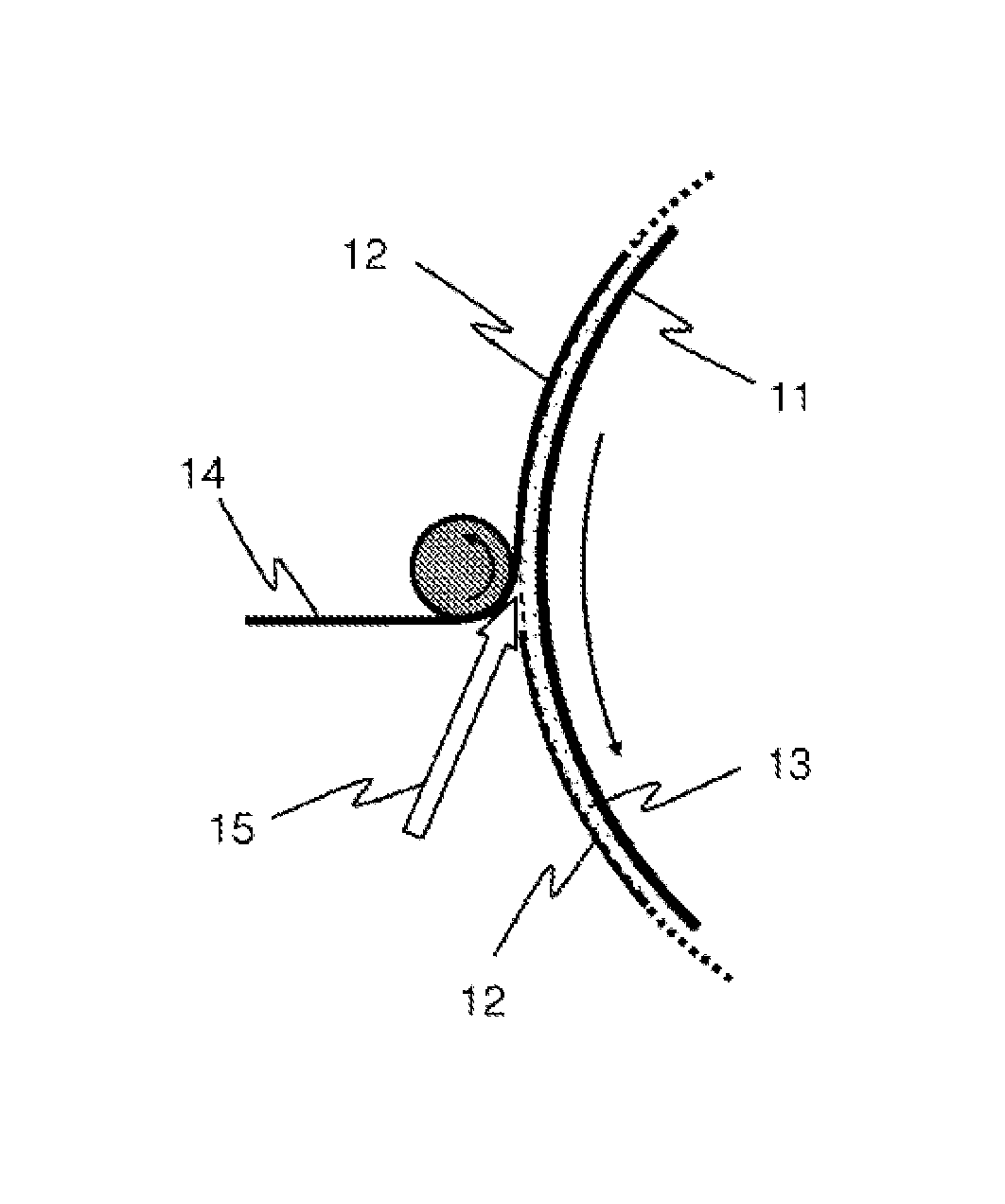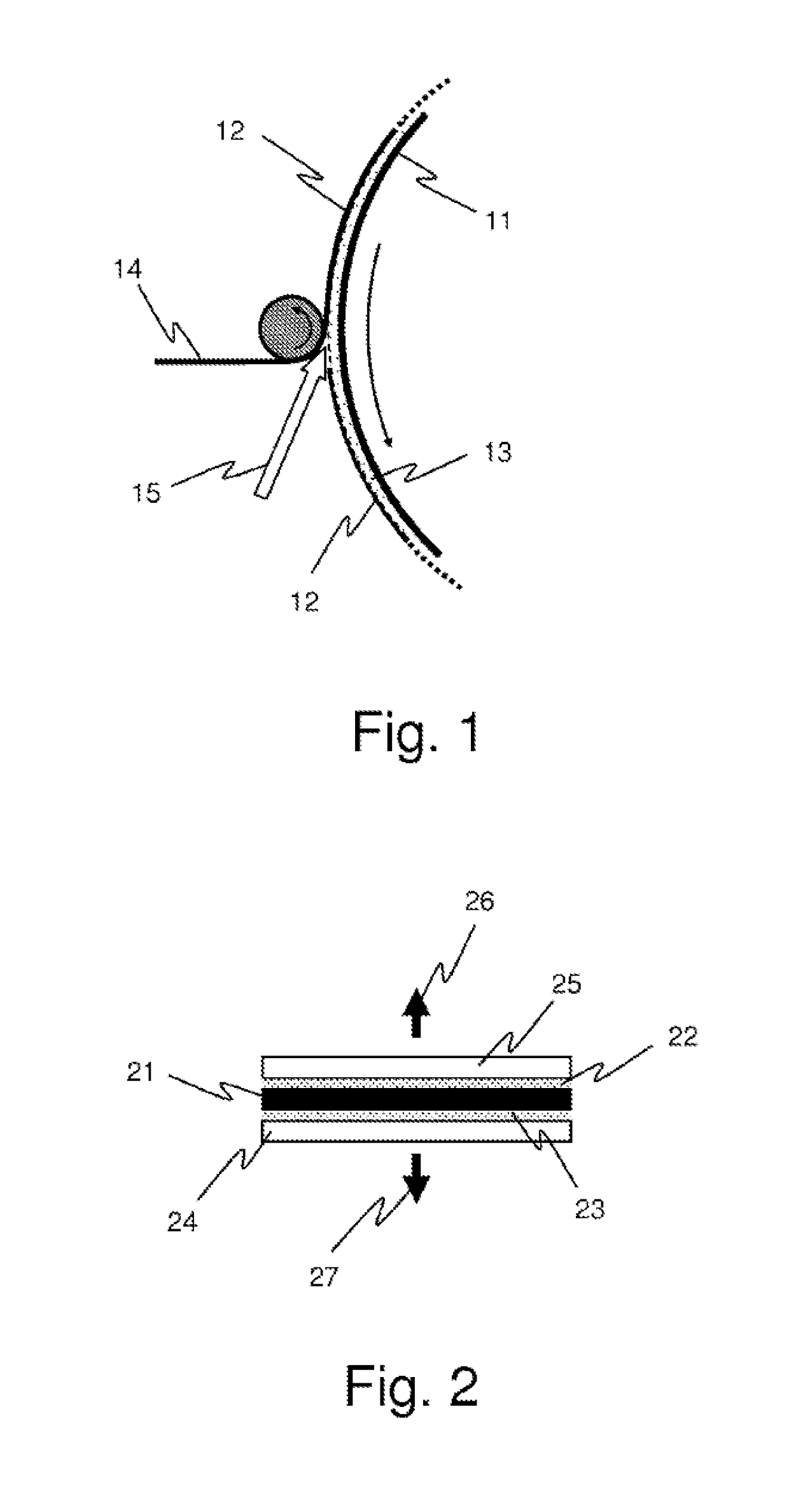Link between a thin metal liner and a composite wall by thermoplastic particle-filled coating
a thermoplastic particle and composite wall technology, applied in the direction of mechanical equipment, vessel construction details, other domestic objects, etc., can solve the problems of liner compression, very thin liner, and low stiffness of liner
- Summary
- Abstract
- Description
- Claims
- Application Information
AI Technical Summary
Benefits of technology
Problems solved by technology
Method used
Image
Examples
Embodiment Construction
[0043]As has been stated above, the object of the presently disclosed embodiment is to enable the joining, via welding, of a first element, not formed of a thermoplastic material, an element made of polymer material or else an element made of metal for example, to a second element made of thermoplastic composite material.
[0044]It is particularly, but not exclusively, suitable for producing a fluid tank comprising an inner envelope, or liner, intended to contain the fluid in a leaktight manner, covered by a mechanically strong wall made of thermoplastic composite material formed directly around the liner, by the filament winding technique for example, the inner envelope and the mechanically strong protective wall, of different natures, being joined by welding to one another.
[0045]In the remainder of the description, the features of the process according to the presently disclosed embodiment are described by way of an implementation example, illustrated by FIG. 1, relating to the prod...
PUM
| Property | Measurement | Unit |
|---|---|---|
| particle size | aaaaa | aaaaa |
| thickness | aaaaa | aaaaa |
| thickness | aaaaa | aaaaa |
Abstract
Description
Claims
Application Information
 Login to View More
Login to View More - R&D
- Intellectual Property
- Life Sciences
- Materials
- Tech Scout
- Unparalleled Data Quality
- Higher Quality Content
- 60% Fewer Hallucinations
Browse by: Latest US Patents, China's latest patents, Technical Efficacy Thesaurus, Application Domain, Technology Topic, Popular Technical Reports.
© 2025 PatSnap. All rights reserved.Legal|Privacy policy|Modern Slavery Act Transparency Statement|Sitemap|About US| Contact US: help@patsnap.com


